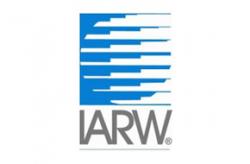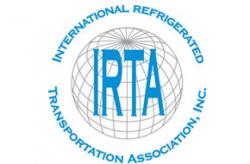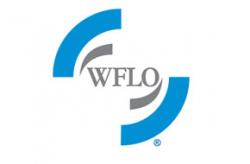It's Boom Time for Building
New parties show unprecedented interest in cold storage construction since the pandemic.
The cold storage construction industry is booming. A record number of projects are in development and a plethora of new companies are entering the industry.
“It is definitely busier than it has been in the entire 27 years I have been in the industry,” says Jake Stefan, CEO of ARCO Design/Build. “There’s a lot of activity from those that have been in the industry for years, and a ton of excitement and interest on the part of those who have been on the outskirts and have money to invest.” The design firm Ware Malcomb currently has large cold storage builds and food processing projects with cold storage components under construction in a number of large markets. “Anywhere there is a growing population, cold storage seems to be growing too,” says Kate Lyle, Studio Manager, Industrial Cold and Food, Ware Malcomb. “There are concerns current spikes in materials pricing, particularly steel, as well as long lead times, might temper the construction boom. On the other hand, vacancy rates in cold storage as low as 2% are encouraging developers to move forward despite possible challenges.” Ware Malcomb designed what it believes was the first U.S. speculative cold storage building based on a unique design prototype in Fort Worth, Texas, in 2018. Lyle says since
that project, the interest in speculative cold storage grew exponentially. “While part of that is a result of increasing acceptance by capital markets, it’s also encouraged by low vacancy,” she says. “And while speculative cold construction rushes to fill demand, end users continue to look towards the more traditional build-to-suit green field projects, dry-to-cold conversions and remodels and additions to address their needs.” Industry watchers attribute a number of drivers to the low vacancy and high demand. Some long-term trends, like the increasing consumer desire for fresh and frozen goods, merged with more recent drivers, like e-commerce, are feeding demand. And of course, all that demand was further impact by pandemic panic buying causing a turn away from justin-time logistics.
“All in all, it is the busiest I have seen cold storage design and construction in the past decade,” Lyle says. Rob Adams, Partner with Tippmann Innovation, agrees the level of interest is off the charts, and he’s seeing more building activity than ever before. “We have more opportunities of green field, redevelopments, the box in the box — these are the immediate needs companies are showing.”
The Pandemic Effect
A lot of what is taking place in cold storage construction in the summer 2021, can be traced back to the impact of the COVID-19 pandemic. During the pandemic when everyone was worried they would be stuck at home and things would be hard to come by, panic buying was extreme, stretching both the supply chain and the quantity of product that had been produced. “The idea of just-in-time deliveries has really been challenged, stretched, and in a lot of ways, broken,” Stefan says. “All the data collected about people’s purchasing habits never accounted for hoarding and panic buying.”“What the pandemic did was highlight that there’s not really a perfect system when it comes to the balance between overstock or supply left in storage versus the amount you need at any one given point and time,” Stefan says. “You’re seeing the response to that in a lot of ways, with a greater focus on having food processing located closer to its point of consumption.” In addition, a stressed labor market with just about every industry looking to hire has made things challenging as well for cold storage construction.
Designing Differently
It is not unusual for companies involved with designing and building cold storage facilities to seek cutting-edge technology and take advantage of new innovations. In 2021, companies are watching innovations in new energy systems and flexible spaces. The pandemic accelerated these two trends, but it was not the only driving force for change. “It’s just part of the natural progression of our industry in a growth mode,” Stefan says. “If you look back at the cold chain over the last five years, it’s been growing fairly consistently. And with that growth, there has been a lot of development in refrigeration technologies, energy efficiencies, lighting and automation in the warehouses.” It’s the latter point where the pandemic may have had the deepest impact, as the need for automation has intensified this past year. “From a reliability standpoint, you don’t have to worry about automation and robots getting COVID,” Stefan says. Adams notes e-commerce opportunities and last-mile factors have increased the need to utilize buildings in a better and more flexible way. “In design, we’re using different styles of racking, semi-automated and fully automated being all in play now,” he says.
“Depending on the location and product and who is going to be in the building, you have to weigh all those factors. From a cold storage standpoint, over the next few years, a lot of building styles and designs will be vetted out.” Moving forward, Adams expects to design in a way that can accommodate full aspects of semi-automated mobile racking and other automated features that allow for greater throughput. Whether it is mobile racks, case stacking processes, conveyor systems or autonomous self-driving forklifts, automation is affecting almost every area of a cold storage facility. Automated storage retrieval systems (ASRS) are quite common in Ware Malcomb’s cold storage projects. Lyle notes they are often combined with conveyor systems, which meets the common goal of designing as many pallets into as small a refrigerated footprint as possible. “We’ve also completed projects utilizing semi-automated pallet shuttles for the same reason,” she says.
According to Lyle, last-mile facilities have two aspects that set them apart from other buildings in the supply chain. First, the land available in the best locations is often smaller lots. Second, those smaller lots often have to accommodate a large quantity of delivery vehicles, such as sprinter vans. “It’s a challenge to get a lot of building and a lot of loading into a small space, so we are often designing around ASRS material handling systems and increasing vertical storage,” she says. “We design multistory warehouses for non-refrigerated storage, but at the moment it is cost prohibitive to add the cold storage component. Because of this, we have also developed a prototype for a single-story warehouse that combines multilevel loading decks with mezzanine loading and ASRS, a hybrid that is well suited to cold storage last mile.” Additionally, the pandemic resulted in the development of “dark stores,” a more low-tech, low-profile solution for last-mile delivery. While there are zoning challenges to the concept of expanding across retail land, it does provide a very different possibility for last-mile distribution as a low-profile pick operation.
Increased Partnerships
The industry has seen a number of new partnerships between cold storage construction companies, REITs and developers to build networks closer to population centers. “There are a lot more people shining a light on this industry,” Stefan says. “I can’t go a week without someone calling to talk about cold storage, and that’s a lot of REITs, a lot of venture capitalist and public equity companies. There’s just a lot of buzz.” He explains that to build one of these facilities, it is very hard to make them flexible for all the different cold chain uses. “Whether use is for temperature-controlled storage, food service distribution or food processing, these all require distinctively different buildings,” he says. “That’s a typical thing to design without spending a tremendous amount of money and potentially having a very large carry on your funds.” Of the majority of temperature-controlled facilities, there are very few that are truly built on spec.
The majority of the time, a tenant is lined up and the purpose of the building is known from the start. Stefan says he is having many conversations about this. Tippmann Innovation recently partnered with global real estate investment manager BentallGreenOak, which will provide capital to fund cold storage development. In Phoenix, Arizona, United States, the company is developing a state-of-the-art cold storage facility with nearly 177 million cubic feet of storage space, 40,000 pallet positions, a 60-foot-deep refrigerated dock and a 40-foot-deep refrigerated rail dock that is fully convertible to refrigerated/frozen space. “As we looked at how to build buildings that are desperately going to be needed, already having capital in place to quickly deploy a building is necessary, and we’ve been working on setting this up for the last 18 months,” Adams says. Ware Malcomb is currently working with numerous developers exploring speculative cold storage development, and the big demand for cold storage seems to match those strong population centers. “While there are also more remote multimarket distribution sites, a lot of sites are closer to major cities,” Lyle says.
“These include suburban distribution centers, smaller last-mile facilities and for those markets with ports – gateway facilities.” Tippmann Innovation has had multiple companies reach out over the last 18 months about entering the cold storage construction field. “We’ve talked with more folks from capital markets and they have been very actively trying to tap into our industry in a bigger way,” Adams says. “Our buildings are very specific and specialized, and it’s been an education for capital markets getting into our space, but the interest is far and wide.”
Looking Forward
Given that interest, ARCO Design/Build remains very optimistic about what’s ahead for cold storage construction. “These projects don’t just happen overnight. Because of the complexities of these buildings and the challenges in how you design and construct them, they have a fairly lengthy conceptual phase,” Stefan acknowledges. “Because of that, we’re talking with potential clients, and we feel very good about the outlook for our industry for the next 12 to 18 months, if not longer.” The view at Ware Malcomb is similar. “The high demand for cold storage is going to continue to keep us very busy,” Lyle says. “It’s an exciting time to work in cold storage, and I’m looking forward to seeing many more speculative cold developments, and seeing some of our prototype ideas become real buildings.”
KEITH LORIA is an award-winning journalist who has been writing for major newspapers and magazines for close to 20 years, on topics as diverse as sports, business and technology.
EMAIL: freelancekeith@gmail.com
Source: Cold Facts July/August 2021 issue



